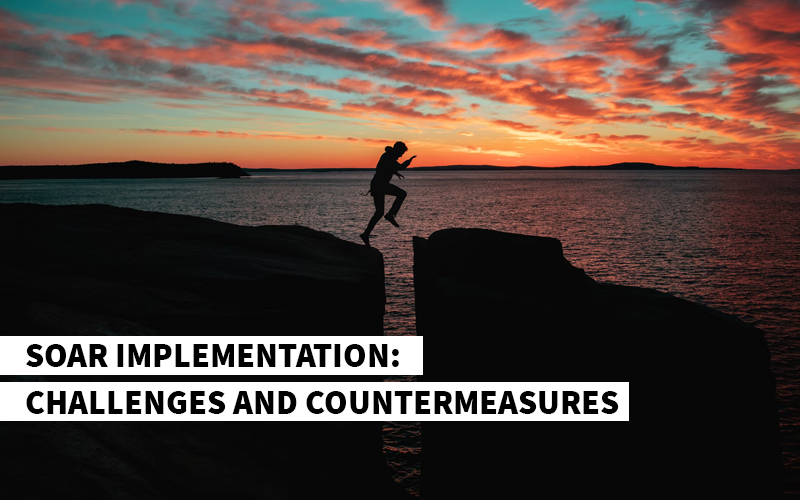
SIRP and Carbon Black – Unparalleled Automation and Endpoint Protection
February 18, 2022
Damian Miller appointed to SIRP Board of Directors
June 6, 2022
SIRP and Carbon Black – Unparalleled Automation and Endpoint Protection
February 18, 2022
Damian Miller appointed to SIRP Board of Directors
June 6, 2022BLOG
SOAR Implementation: Challenges And Countermeasures

SOAR (Security Orchestration, Automation, and Response) solutions are garnering great interest from enterprises and managed security services providers (MSSPs) both.
The reason for this is simple: to counter the ever-rising frequency and complexity of cyberattacks. The cybersecurity environment continues to change and become more sophisticated, and implementing a SOAR solution improves organizations’ security efficiency immensely.
If you are one of those who already have a SOAR solution that meets your requirements, Great! This shows that you've made progress in terms of security processes and technology. While it may be tempting to jump right in and automate everything, tread carefully. To guarantee a successful SOAR implementation and achieve the promised and expected ROI, avoid the following four pitfalls:
01: A Scarcity Of In-house Expertise
SOAR necessitates a tailored approach to meet the:
- Organization's security objectives
- Maturity level
- Seamless deployment
Thus, the organization's security team must have certain skills and competencies, otherwise, the deployment will be slowed or might even fail.
For instance, when it comes to integrating security tools and creating playbooks with a SOAR solution, some SOAR solutions require hands-on knowledge of scripting languages like Python, Ruby, or Perl. Thus lack of these coding capabilities will hinder your ability to finish the required integrations and build the necessary playbooks.
How To Counter This Issue?
- Choose a SOAR solution that has maximum out-of-the-box integrations that your organization requires or better if it provides you with free-of-cost integrations so that your team doesn't need to take the pain of writing integrations themselves.
- Or choose a SOAR solution that aligns with your in-house capabilities to guarantee a seamless rollout (implementation) and minimize delays. Make sure to inquire if your desired solution supports both a graphical user interface (GUI) and a scripting module, such as an integrated development environment (IDE). The GUI can let non-coders take advantage of the SOAR solution's benefits right away, potentially through drag-and-drop functionality, while the IDE allows coders to undertake more advanced modification, if necessary.
02: Not Having Defined Incident Response Processes In Place
When it comes to people, procedures, and technology, it's critical to have specified incident response procedures when adopting a SOAR solution. It will be tough to prioritize what you need to automate first if you don't have clear incident response processes. If the incident response processes are not outlined before setting up a SOAR solution within your organization, playbooks that automate your processes cannot be successfully built.
How To Counter This Issue?
- Before deploying a SOAR solution, ensure that you have documented standard operating procedures (SOPs) and processes in place so that you can integrate SOAR with your people, processes, and technology as successfully as possible.
03: Misaligned Expectations
SOAR emphasizes the automation of security operations procedures, yet some organizations struggle with this. This is due to their inability to determine which operations should be automated, and their desire to automate every tedious activity.
Organizations with SOAR expect to automate every possible process, however, automation may not be the best path to solving your problems. Attempting to automate everything at once might make it difficult to isolate the cause of any process issues.
Simply, SOAR isn't a panacea that will fix every security problem and automate every operation. This solution assists security teams and organizations in streamlining their security workflows to improve alert management, incidence response, and asset management.
Another problem is that even the most difficult and malevolent scenarios require the hands-on, critical thinking that only a security analyst can provide. Thus, every SOAR deployment is always about finding the optimal mix of machine-driven and analyst-driven operations for your specific SOC.
How To Counter This Issue?
Instead of automating every process and leaving every aspect of threat analysis, prioritization, and mitigation through the SOAR solution, identify which activities can be automated, and which ones should remain analyst-driven. Look for a solution that offers a single workflow to seamlessly combine both kinds of tasks.
04: Set & Forget - A Wrong Strategy
It's impossible to get everything done properly on the first try. Even if you put a lot of time and effort into creating a specific incident response plan, there's a strong chance it won't be ideal. Furthermore, cyberthreat tactics, techniques, and procedures (TTPs) keep on evolving. As a result, the automation playbooks you may have built in the past can age and would not be applicable in your current environment. Therefore, you must adapt and absorb changes as necessary.
How To Counter This Issue?
Monitor the implementation, run tests, and scenarios, and keep improving automation processes to ensure they remain up-to-date against evolving threats. SOAR solutions that allow you to conduct tests and alert simulations on your playbooks can aid in this ongoing development.
Review the operational metrics from your security operations and response program to understand your current status. Make sure to focus on all metrics to understand the broader picture, and not just a subset of metrics that often lead to myopic decision-making with respect to SOAR implementation.
Learn about your current security posture - Where you stand right now!
A SOAR solution provides a comprehensive, proactive, and robust way to strengthen security with contextual threat intelligence, enhanced incident response, and automated security operations. Nonetheless, if you don’t know where you currently stand, you won’t know where you need to improve, or how SOAR can help you fill those gaps.
Challenges Aside,
Yes, the issues listed above are among the typical challenges you may face while implementing your SOAR, but they can be overcome. However, keep in mind that SOAR solves the majority of the main security concerns that security teams confront.
SOAR overcomes these challenges:
- Too many alerts to handle
- Lack of incident management capabilities
- Undocumented or inconsistent processes
- Inability to record and generate metrics
- Lack of qualified security professionals
- Repetitive, manual processes
- Complying with regulations, standards, and best practices
Conclusion
SOAR has the potential to drive process improvement, increase efficiency, and maximize effectiveness for organization SOCs. Therefore, understand how it can best help your team to maximize the use of current technologies, and empower your existing team, processes, and procedures.
SIRP brings advanced capabilities into an organization’s security ecosystem. This embeds security scoring throughout the security operations, ensuring consistent, high-quality outcomes and efficient operations.

